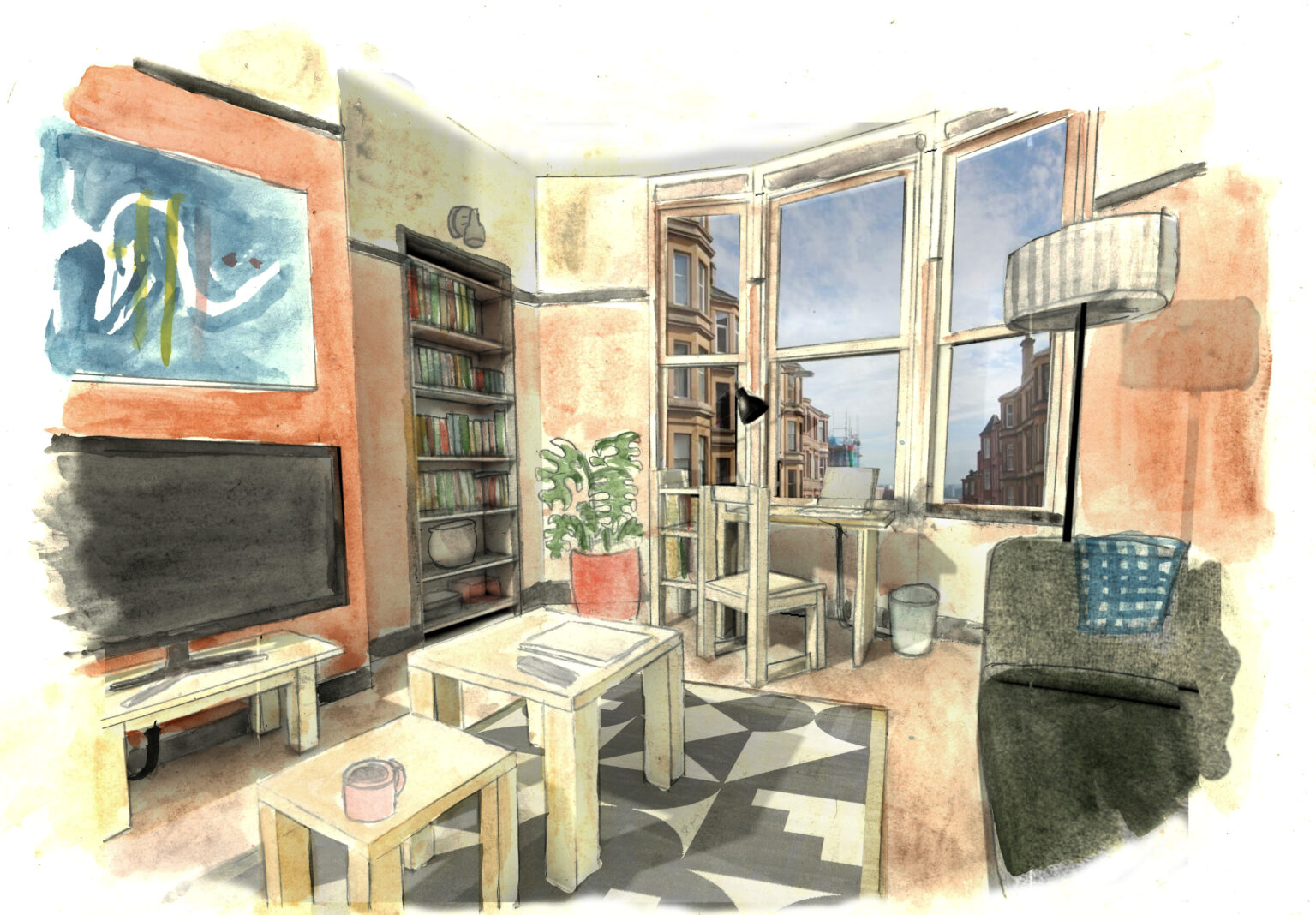Alex Gardner (He/Him)

As a forward-thinking designer, I am ever conscious of the importance of the incorporation of new materials and methods to future-proof my work. I am also very passionate about the knowledge we can gain from the history of design, and believe a skilful balance of honouring tradition and embracing modernity must be found to create truly successful solutions.
My projects at the GSA have focused mostly on the shared experience of domesticity, community artistic engagement, and the challenge of visually preserving heritage in sustainable ways appropriate for the modern design landscape. I have thoroughly enjoyed transferring my skills from my undergraduate degree in production design to a much deeper theoretical and ambitiously designed practice.

Semester 3: Con/Temporary, Flat-Packing Home for Rented Spaces
Motivated by the complex relationship between home making practices and rented spaces, this project aims to find more intelligent design solutions to temporary spaces. With a particular focus on object memory in the process of making spaces feel like ‘home’, also aiming to counteract the impact affordable ‘flat pack’ furniture has had on the role and value of domestic furnishings. Overall, intending to present more flexible solutions with change pre-emptively and more sustainably built in.
My research lead me into research covering traditional home-making practices, as well as how contemporary renter friendly hacks have affected the DIY landscape. After discovering the positive impact self-made and modular constructions can have not only on the environment but on comfort the domestic environment, I explored the potential of reintroducing more tactile home-making techniques.
Con/Temporary proposes an expansion on the IKEA flat-pack furniture we know to embrace environments of change. By rationalising measurements and stripping back more traditional DIY techniques, objects are granted a number of perks; from expanded creative potential from the increased freedom of form to increased longevity thanks to the increased repairability.









Semester 2 – The Glasgow Archive of the Unremarkable Home
Over the past 100 or so years, for the same amount of time a Chimney has stood on Yorkhill, there have been huge developments, reconsiderations, demolitions, and constructions surrounding what a home means to the people of Glasgow . As Interior design has changed drastically alongside these new attitudes, there have been many homes that, although held dear for many are lost to the passage of time.
Chimneys are often seen as the heart of the home, and their ghosts are often the most distinct part of the shells left behind, if not the last element standing. The chimney on York Hill whilenot domestic, will also have served as a beacon of familiarity and comfort to those using it a way finder, as well as being a consistent character in the skyline views of its neighbours from their windowsills. To document and preserve the changing face of the Glasgow home, I intend to create an archival installation that playfully reinterprets elements of domestic interiors.
By playing with fireplace elements within an oversized chimney and communicating in keeping with the chimney’s own brutalist form, I hope to alter the visitors’ perceptions of the space by introducing them to many familiar elements of different homes. The space will ultimately host memories of homes past while providing viewpoints to look over the changing face of Glasgow, as well as maintaining the chimney as a warm directional beacon for those finding their way home.







Semester 1 – Maker & Menu
The SLICE project looked to explore new opportunities for a Glasgow street in flux – Sauchiehall Street.
Where the takeaways present on Sauchiehall serve an important purpose in the night-out ritual, the space they occupy goes to waste during daylight hours. I wanted to use this project to explore the potential of tandem retail units to make full use of the space over a 24 hour period, as well as exploring new ways to tackle the ever-growing problem of fast-food waste.
I proposed Maker & Menu as a collaborative fast food concept venture and community maker’s space. Focusing on re-framing the British tradition of fish and chips, a series of seasonal but simple menus, prioritising the use of local produce would be available at peak takeaway time through a street-food style service hatch.
While the kitchen would occupy the front half of the shop, the back would be incorporate a studio. where artists and makers would be invited to take up residence in tandem with the seasonal menus to re-use the waste products created by the kitchen in their work.
What the space would hopefully produce is a more excited attitude towards the creative re-use of food waste as well as a fresh perspective on how we construct our high-street fast foods.










